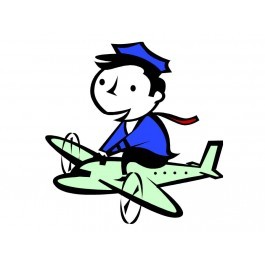|
|
Flight Instructor Check RidesDescriptionHere is a collection of notes from CFI applicants recounting their CFI checkride.Pictured below is a note that Harry received from someone that Harry prepared for his flight instructor checkride. It was a very happy client. Explain the difference between SRM, CRM. Explain the difference between cockpit resource management and crew resource management. CRM means the effective use of all resources, both human and material, and both within and outside of the cockpit, to achieve safe and efficient flight operations. Explain to your students that they must be aware of the resources available to them both inside and outside the cockpit. If resources are not known, they cannot be used. Once your students have identified their available resources, they must learn to evaluate whether there is time available to use a particular resource. In the event of a total power loss at low altitude just after takeoff, there will probably not be time to check the POH for engine restart procedures, which must be committed to memory and followed instinctively. However, a quick radio call to ATC to alert firefighting and rescue crews could save lives. Along with being able to identify resources, your students must also develop the ability to use the resources. A hand-held GPS is of no use to your student during an alternator failure if (s)he does not know how to use it. Explain the difference between the PTS and the ACS. - The ACS is an enhanced version of the PTS, and it began replacing the PTS on June 15, 2016. The ACS adds task-specific knowledge and risk management elements to each PTS Area of Operation/Task. The result is an integrated presentation of specific knowledge, risk management, and skill elements for each task. FAA questions and answers regarding the ACS Compare PAVE and 3 Ps checklist The first step of the 3 P cycle: Pilots should remember to “Perceive with PAVE.” Pilot – Experience, recency, currency, physical and emotional condition. Aircraft – Fuel reserves, experience in type, aircraft performance, aircraft equipment (e.g. avionics, retractable gear, etc.) enVironment – Airport conditions, weather (VFR and IFR) requirements, runways, lighting, terrain. External Pressures – Allowance for delays and diversions, alternative plans, personal equipment. Use the PAVE checklist to perceive and identify all hazards associated with the flight, you should PROCESS the hazards identified through the CARE checklist and determine the level and severity of the risk. By using CARE, you will better understand the situation at hand from a top-down, big-picture perspective. The mnemonic to remember here is to “Process with CARE.” Consequences – Continuously evaluate the consequences (risks) of hazards that arise while en route. Alternatives – Continuously evaluate all available options and alternatives. Reality – Acknowledge and address the reality of your situation (weather, aircraft, etc.), and avoid wishful thinking. External pressures – Be mindful of external pressures, especially tendencies toward “get-home-itis.” The third step is to PERFORM risk management using the risk controls found in the TEAM checklist. The TEAM checklist will provide different options and/or alternatives for effective risk management. Remember, “Perform as a TEAM.” The TEAM checklist will provide different options and/or alternatives for effective risk management. Remember, “Perform as a TEAM.” Transfer Risk – Should this risk decision be transferred to someone else (e.g., do you need to consult someone else for advice/guidance or take along a more experienced pilot or CFI)? Eliminate Risk – Is there a way to eliminate the risk altogether (e.g., cancel/reschedule the flight)? Accept Risk – Do the benefits of accepting the risk outweigh the costs? Mitigate Risk – What options do you have that can lessen the impact of the risk When you teach risk management and decision making, pilots learn to analyze difficult situations quickly and make informed responses. CFIs cannot train students for every situation they will encounter after the completion of their training, but you can offer a wide variety of scenarios that will teach students how to make better decisions. CFI Checkride Summer 2005 KESN Detailed Information
|










